
Today began like any other weekend day; I woke up, thought through the list of things I needed to do, then took off to hide in the shop. I rarely get to work on projects of choice these days as there is little time left after working the projects on the work schedule. Today is different.
The CZ 550 Medium full stock is one of my favorite woods rifles. No, it has no lever, it is not a 308 Winchester and it has no scope. It is not chambered for the 30-30 WCF, or the 308 Winchester, or the 45-70 Government. It is chambered for the 6.5x55mm Swedish. It is, however, compact, light, fast handling, and accurate. It is a Czechoslovakian interpretation of what happens when Black Forest meets Bavaria, while thoughtfully omitting all references to Lederhosen.
The 6.5×55 Swedish
The 6.5×55 Swedish is an interesting cartridge. It was widely chambered in military Mauser firearms and it remains in popular use with Swedish and Norwegian big game hunters and competitive shooters. The 1894 Model 94 version was originally loaded with a 156 grain bullet at 2378 fps, the Model 41 version with a 139 grain pointed boat tail at 2625 fps. Both velocity standards are based on a 29.10″ barrel. The cartridge’s current SAAMI MAP pressure is 51,000 PSI. The CIP standard is slightly higher, but tests are conducted with differing methodologies.
The original Model 94 full stock carbine was issued with a barrel length of only 17.7″. A rare version intended for short range gallery practice has a 1:16.93″ twist rate, however, the more typical carbine has a 1:7.87″ twist, intended to stabilize the original long 156 grain round nose bullet. Winchester and Ruger manufactured rifles chambered for the cartridge have a 1:8 twist. The CZ-550 FS has a 1:9″ twist. Both are intended to accommodate more modern, shorter length bullet designs.1)
The cartridge’s appeal to handloaders over the years is directly related to how well the cartridge responds to modern loading and because of the large number of high sectional density, high ballistic coefficient bullets that are available for hunting and for competitive shooting. Even when muzzle velocity seems modest, down range the 0.264″ bullet retains velocity, which means greater stability and high levels of kinetic energy.
I like the round because it also makes an excellent north eastern hunting cartridge; good reach, good power, light recoil and inexpensive to reload. Its capacity makes it efficient, so good performance can be delivered from a short barrel. The 6.5x55mm is proof that good ideas last. In over 118 years, no collection of people or companies have been able to come up with a better 6.5 hunting round, without producing a limited application cartridge. For as much as I appreciate the 264 Winchester magnum, it requires a long barrel, it’s expensive to feed and it is not a cartridge that performs well close in. The 260 Remington is a… 6.5x55mm short when the latter is loaded to modern specifications, a relationship very similar to the 450 Marlin and the venerable 45-70 Government.
Pressure within the context of this article
All handloads presented here are for modern commercial bolt action rifles. The approach we took is very similar to what is expressed by Speer#14. The manual differentiates military from commercial firearms by setting military firearm load data at a MAP of 51,000 PSI and commercial rifle loads at 58,000 PSI. Loads appearing on this page have a ceiling of 60,000 PSI. From the standpoints of case dimensions, bolt thrust and pressure, the CZ-550 is chambered for a number of more intense cartridges. In fact, this subject rifle has a twin chambered for the 375 Ruger with no other modification than barrel change and bolt face relief. That cartridge has a MAP of 62,000 PSI and approximately 50% greater bolt thrust. None of these loads are for use in any standard surplus military firearm.
The use of exotic bullets…
There is a certain contingency of 6.5×55 Swedish fans who seem to speak of this cartridge with great reverence. I mentioned on our Facebook page that I was taking a break from the editorial calendar to work with this rifle and cartridge and to develop some handloads for hunting deer and hogs at ranges less than 100 yards. I was immediately greeted with comments defining the ONLY components appropriate for the cartridge, all absurdly expensive and actually quite inappropriate. I guess folks forget this cartridge’s humble origins; tons of cheap, but very accurate, surplus Mausers and lots of cheap, old military ammunition. The problem is that handloading, handloaded discussion, is rife with platitudes based on circumstances that hardly ever apply or are based on incorrect assumptions.
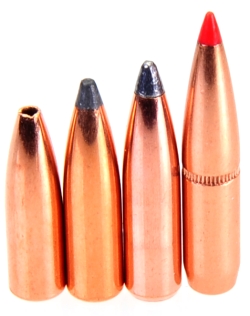 Do I have a quantifiable reason for this bullet selection? Apologetically no. They work well on deer and hogs, empirically more than anecdotally speaking. While they can handle a 300 yard shot, more importantly, they can handle a 50 yard shot at 6.5x55mm velocities and expand properly. I could have picked from any number of bullets that are offered at reasonable prices, from mainstream manufacturers and neither the deer or hogs would know the difference.
Do I have a quantifiable reason for this bullet selection? Apologetically no. They work well on deer and hogs, empirically more than anecdotally speaking. While they can handle a 300 yard shot, more importantly, they can handle a 50 yard shot at 6.5x55mm velocities and expand properly. I could have picked from any number of bullets that are offered at reasonable prices, from mainstream manufacturers and neither the deer or hogs would know the difference.
For the most part, these are short bullets, which bodes well for the CZ’s comparatively lazy 1:9″ twist. The exception is the only elongated boat tail in the bunch, the 140 grain Hornady SST. Yes, I am aware that the Partition claims boat tail status, but the bullet’s heal is more chamfered than a true boat tail and the overall bullet length is short enough to stabilize with a 9″ twist. Besides, they will be pushed to velocities beyond the norm and twist rate, as defined by Greenhill, is actually a metaphor for bullet rotational velocity.
Are we there yet?
A rifle’s maximum overall cartridge length capacity is measured at the point where a chambered cartridge simultaneously contacts the firearm’s breech face and its rifling, or the point where a bullet is seated outward until it is no longer retained by the case. Maximum functional cartridge length is the maximum mechanical length appropriately reduced to accommodate relevant real world considerations or to meet a dimension specification.
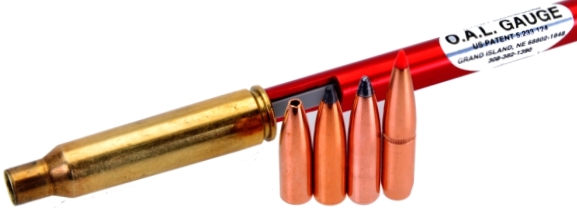
The easiest way to determine the rifle’s maximum cartridge length capacity or maximum functional length is to employ the assistance of an OAL gauge. If you are not familiar with this tool’s function, the linked article does a decent job of explaining with illustrations and a cutaway of a barrel’s chamber with a chambered round.
Part of this Hornady OAL gauge is a modified cartridge case. Essentially, a nominally dimensioned casing with the neck opened just enough to allow a bullet to move through it with little effort. The case’s primer pocket has been drilled out and the resulting hole is threaded to fit onto the gauge. Modified cases retail for less than $6 and they are available for most cartridges. Sometimes they are not, as is the case with the 6.5×55 Swedish, but modified cases are easy enough to make.
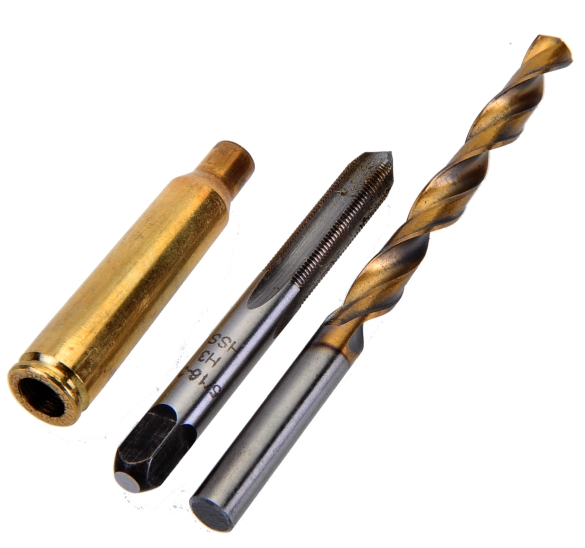
I tend to use once fired brass that has been passed through my sizer die and inside neck reamed and polished for bullet clearance. The piece supplied by Hornady as a modified case is made from new, unfired brass. The required tap is a 5/16×36. Machinery’s Handbook indicates, where the material thickness is between 1/2 and 3/4 the diameter of the hole, the tap drill should be 0.284″ – 0.288″. I use a 0.290″ “L” drill or a 9/32″ as they seems to make for clean threads in cartridge brass. I have seen a 19/64 drill referenced by some folks, but in my experience that makes for a sloppy fit and short lived threads. A deprimed case is checked in the shop’s lathe, the primer pocket is drilled out, then the case is hand tapped while still in the lathe chuck. No, a lathe is not necessary.
Above all, avoid advice… including mine, but here’s mine anyway
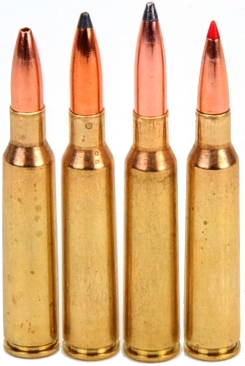 The SAAMI cartridge overall length specification for the 6.5×55 Swedish is 3.150″, however, none of the bullets selected could be assembled to that length because that would result in insufficient bullet seating, or a bullet not seated in the case at all, with the exception of the Hornady. The Hornady has a cannelure that locates the bullet too deeply, which reduced net case capacity more than I would accept…. which caused me to add other 140 grain bullets as an addendum. I just couldn’t get what I wanted out of the Hornady and I don’t like seating out bullets and ignoring cannelure location.
The SAAMI cartridge overall length specification for the 6.5×55 Swedish is 3.150″, however, none of the bullets selected could be assembled to that length because that would result in insufficient bullet seating, or a bullet not seated in the case at all, with the exception of the Hornady. The Hornady has a cannelure that locates the bullet too deeply, which reduced net case capacity more than I would accept…. which caused me to add other 140 grain bullets as an addendum. I just couldn’t get what I wanted out of the Hornady and I don’t like seating out bullets and ignoring cannelure location.
The SAAMI spec accommodates a bullet that projects 0.985″ beyond the cartridge case mouth, the giant, jumbo 156 grainer of 1894. The table below shows the maximum mechanical cartridge length as measure with an Overall Length Gauge, as well as the overall length I arbitrarily, but not capriciously selected. No, those terms are not redundant. In the real English language, those words mean something quite different. Adequate seating just means seating equal to caliber. Somewhere in the Real Guns site is an article on seating, crimping and quantified strength of retention. Is this rule of seating yet another empty platitude? I prefer to think of it as an axiom.
| Bullet | Weight Grains |
Maximum Possible Cartridge Length |
Assigned Maximum Cartridge Length |
Determining Factor |
| Sierra Varminter | 100 | 2.968 | 2.820 | Adequate Seating |
| Sierra Pro Hunter | 120 | 3.052 | 2.990 | Adequate Seating |
| Nosler Partition | 125 | 3.102 | 3.080 | Adequate Seating |
| Hornady SST | 140 | 3.128 | 2.905 | Cannelure Location |
I think it looks something like this….
 |
Warning: Bullet selections are specific, and loads are not valid with substitutions of different bullets of the same weight. Variations in bullet material and length will alter net case capacity, pressure and velocity results. Primer selection is specific and primer types are not interchangeable. These data represents maximum loads in our firearms and test equipment and may easily be excessive in other applications. All loads should be reduced by 3%, and developed following safe handloading practices as represented in established reloading manuals produced by component manufacturers. Presentation of these loads does not constitute a solicitation for their use, nor a recommendation.
|
||||||||||||||||||||||||||||||||||||||||||||||||||||||||||||||||||||||||||||||||||||||||||||||||||||||||||||||||||||||||||||||||||||||||||||||||||||||||||||||||||||||||||||||||||||
|
|||||||||||||||||||||||||||||||||||||||||||||||||||||||||||||||||||||||||||||||||||||||||||||||||||||||||||||||||||||||||||||||||||||||||||||||||||||||||||||||||||||||||||||||||||||
And my weekend is over…
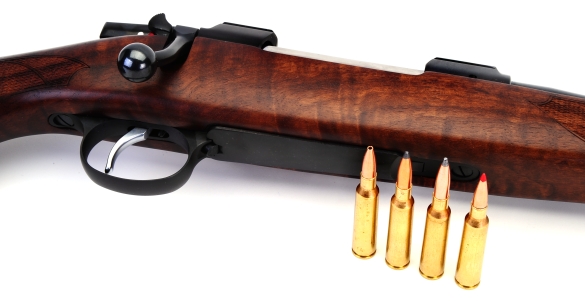
I would say the groups indicated are a tribute to my ability to shoot them with metallic sights… if I had shot them with metallic sights. The scope went on for group sizes even if they were shot rather casually. I still like the rifle very much, I think the Speer and Nosler bullet loads got me the closest to where I wanted to be. Thanks for bearing with me through some recreational handloading.

Email Notification